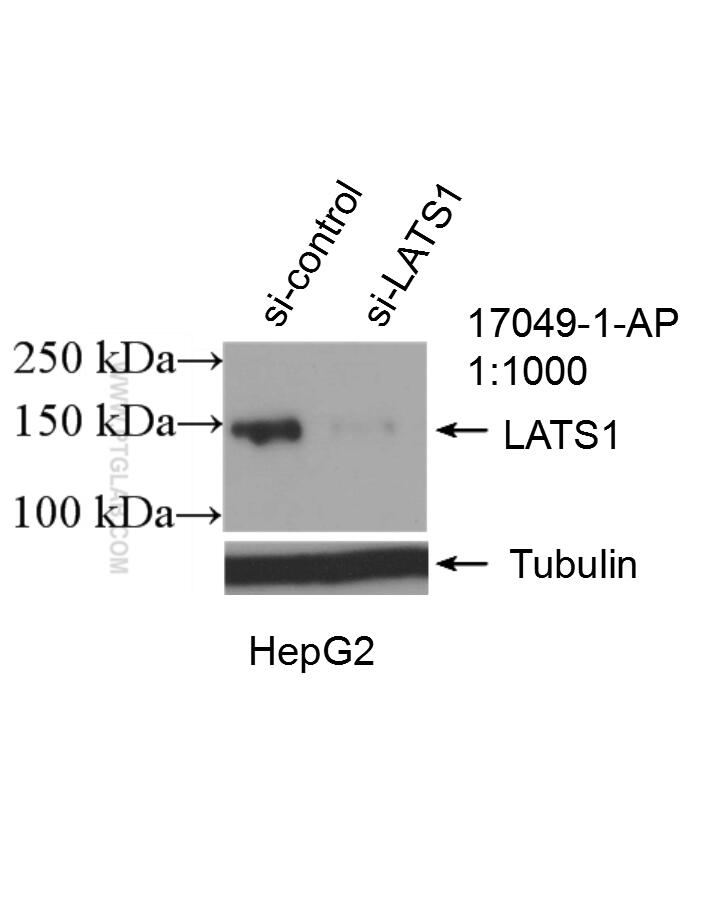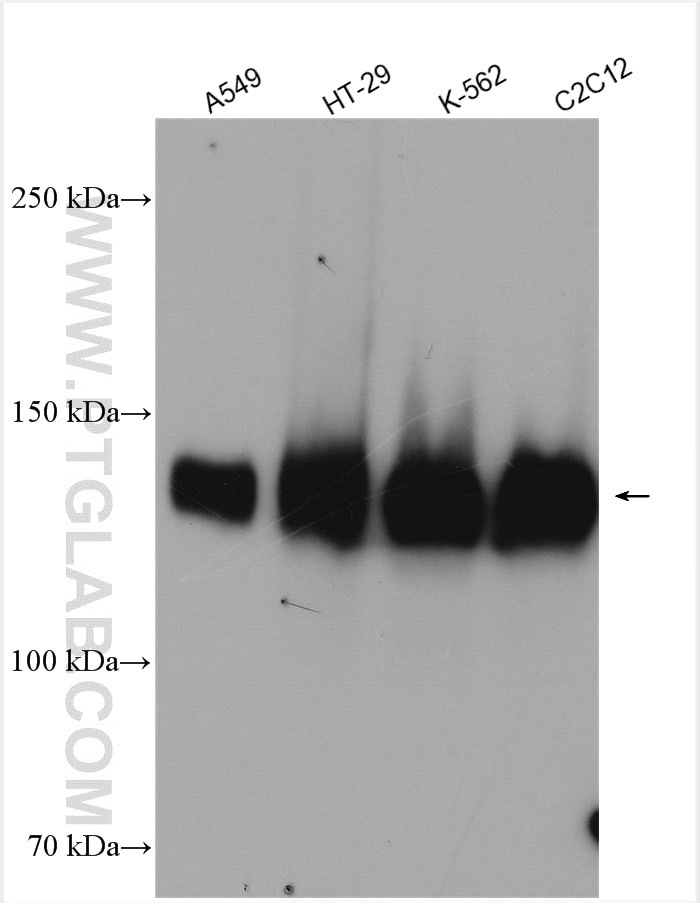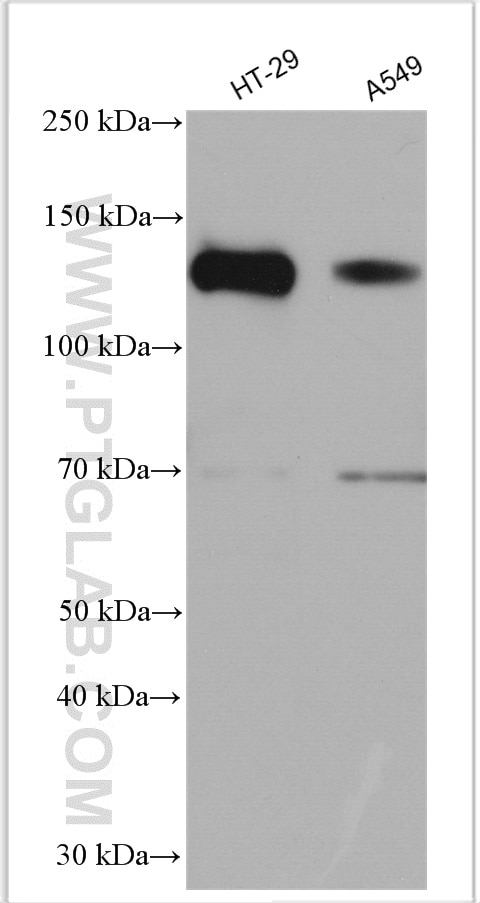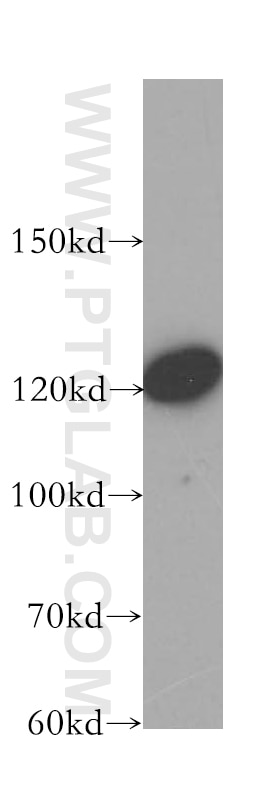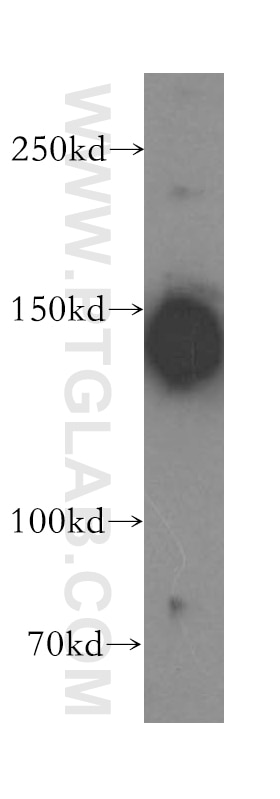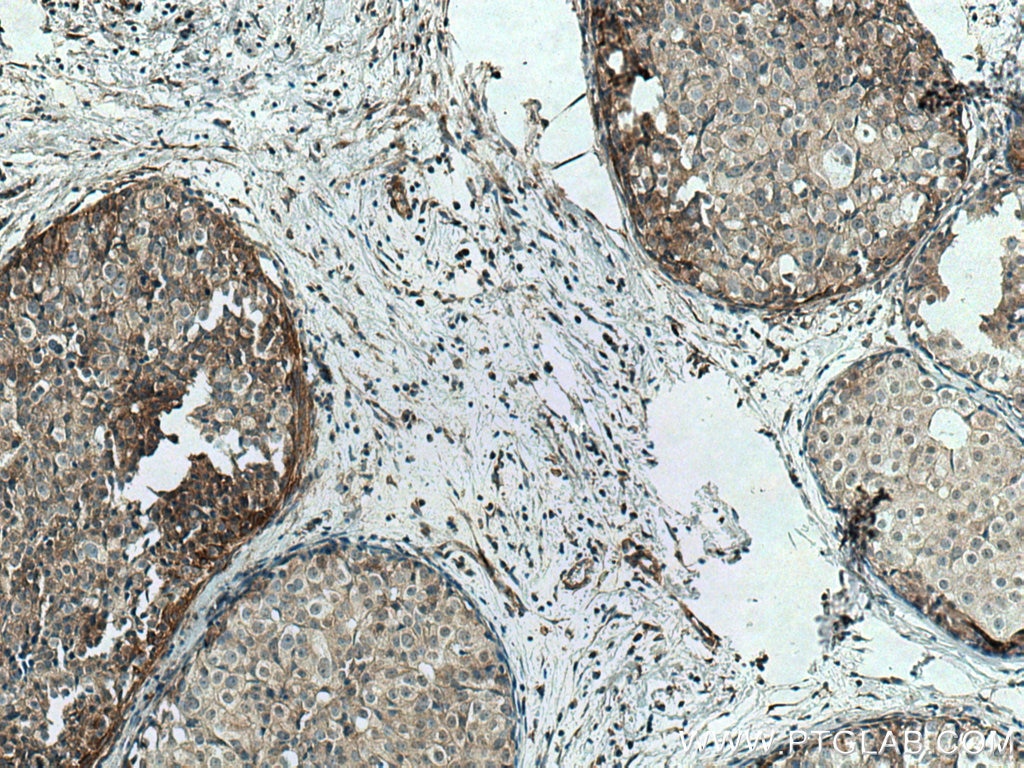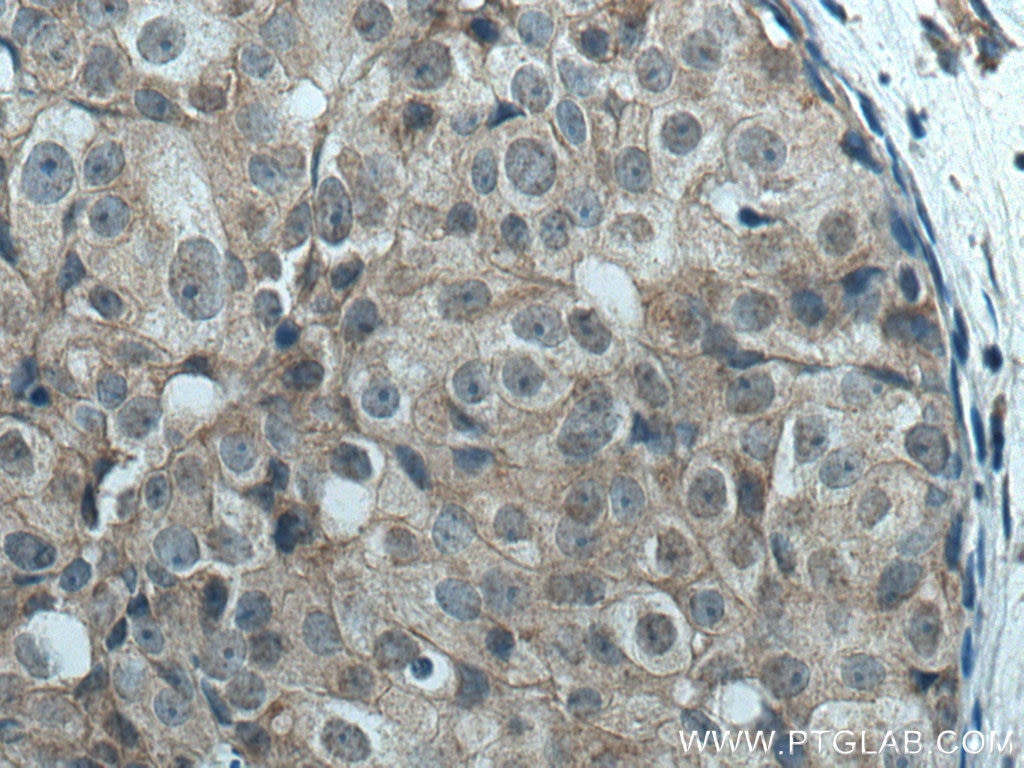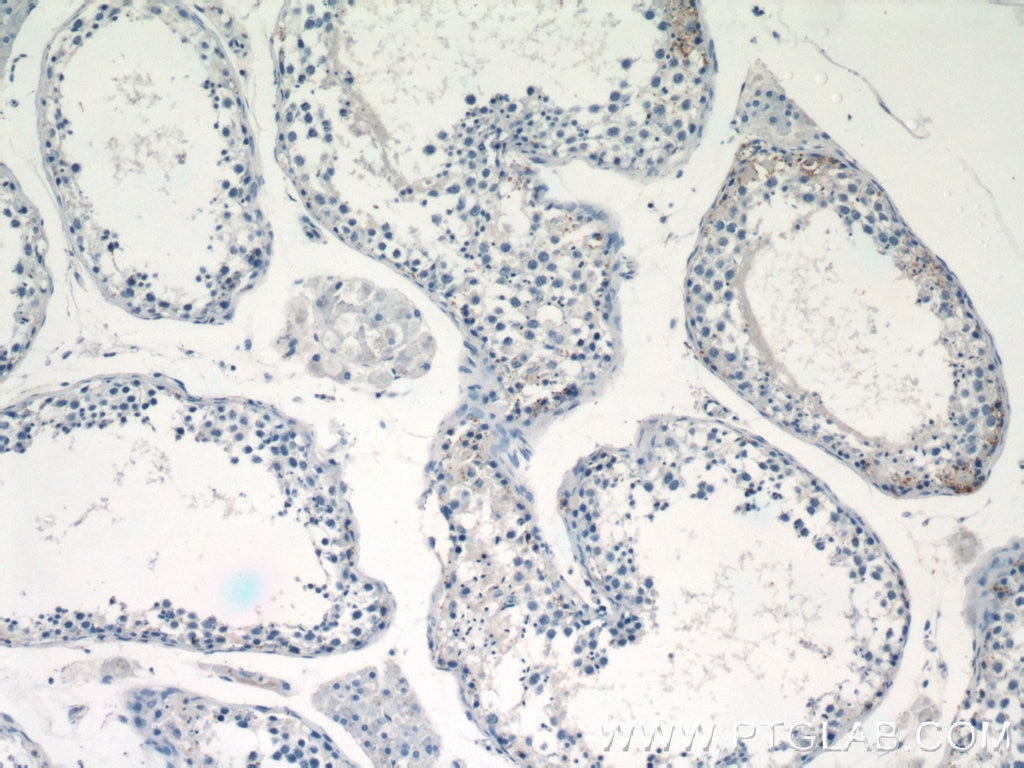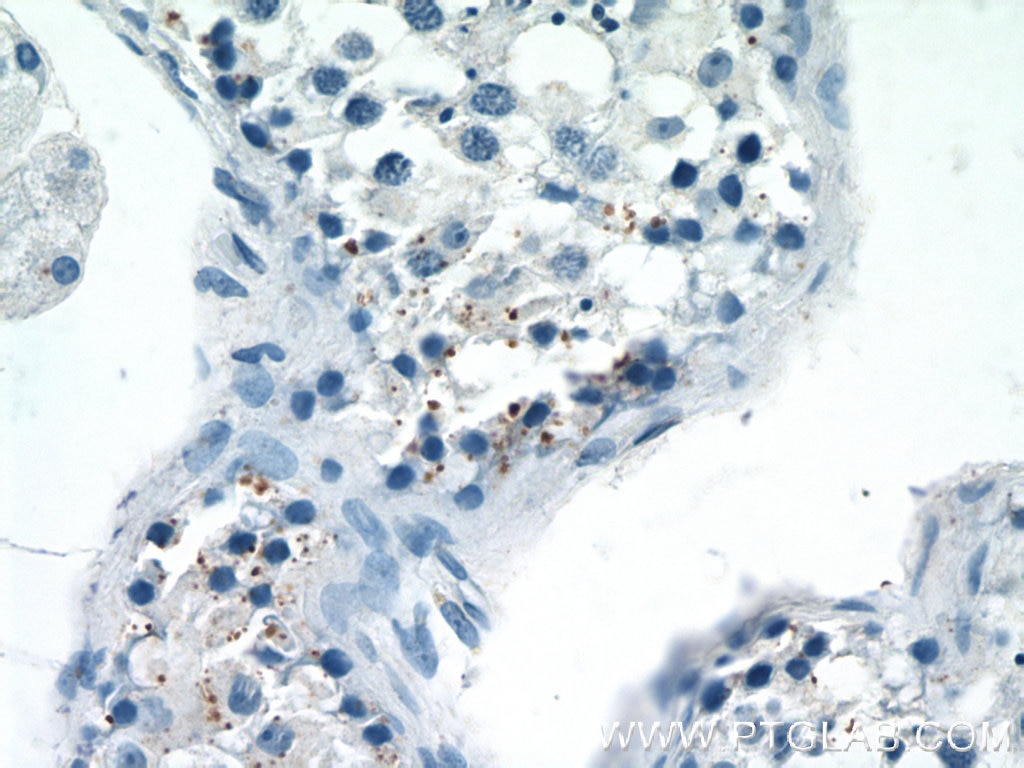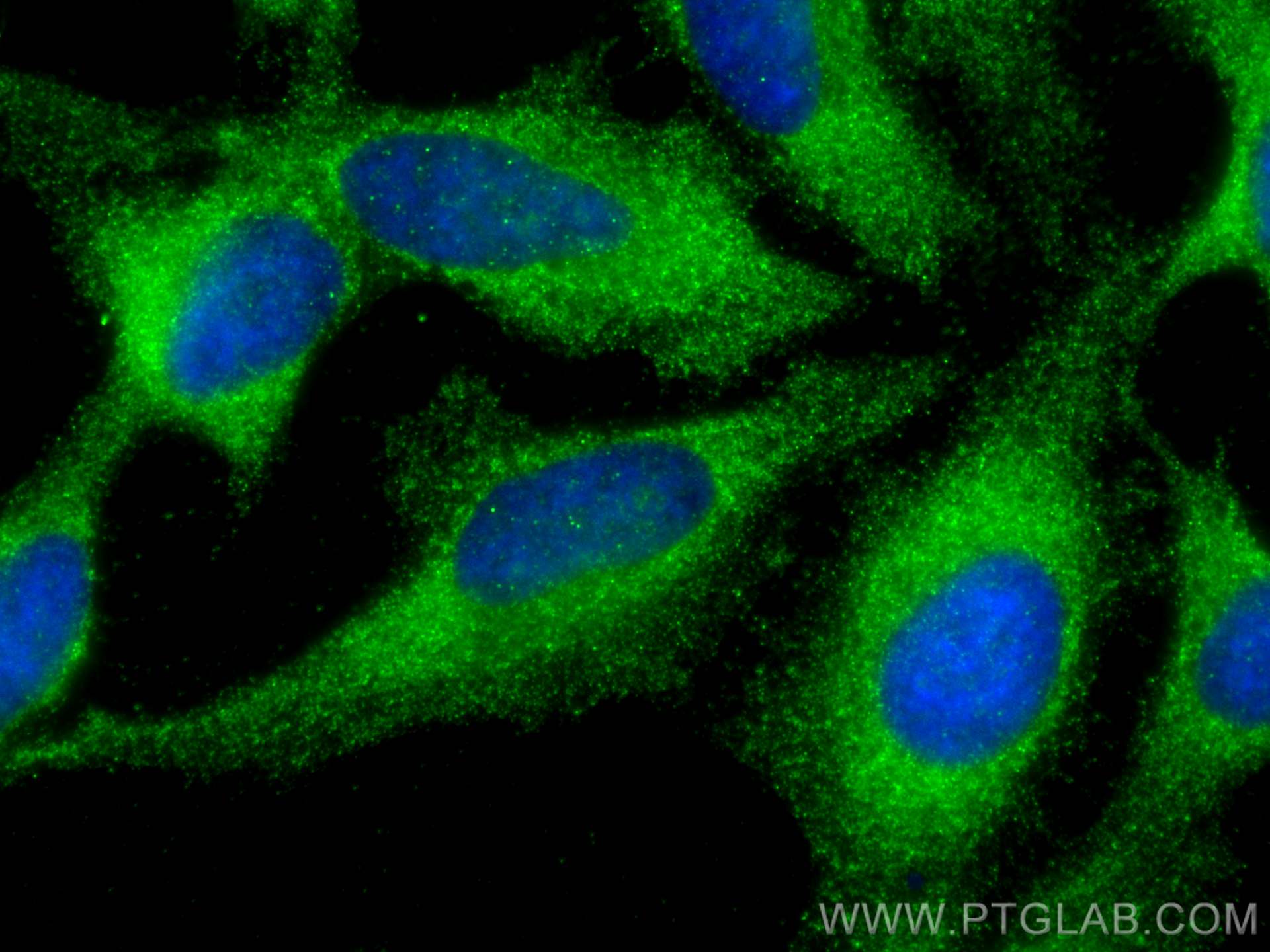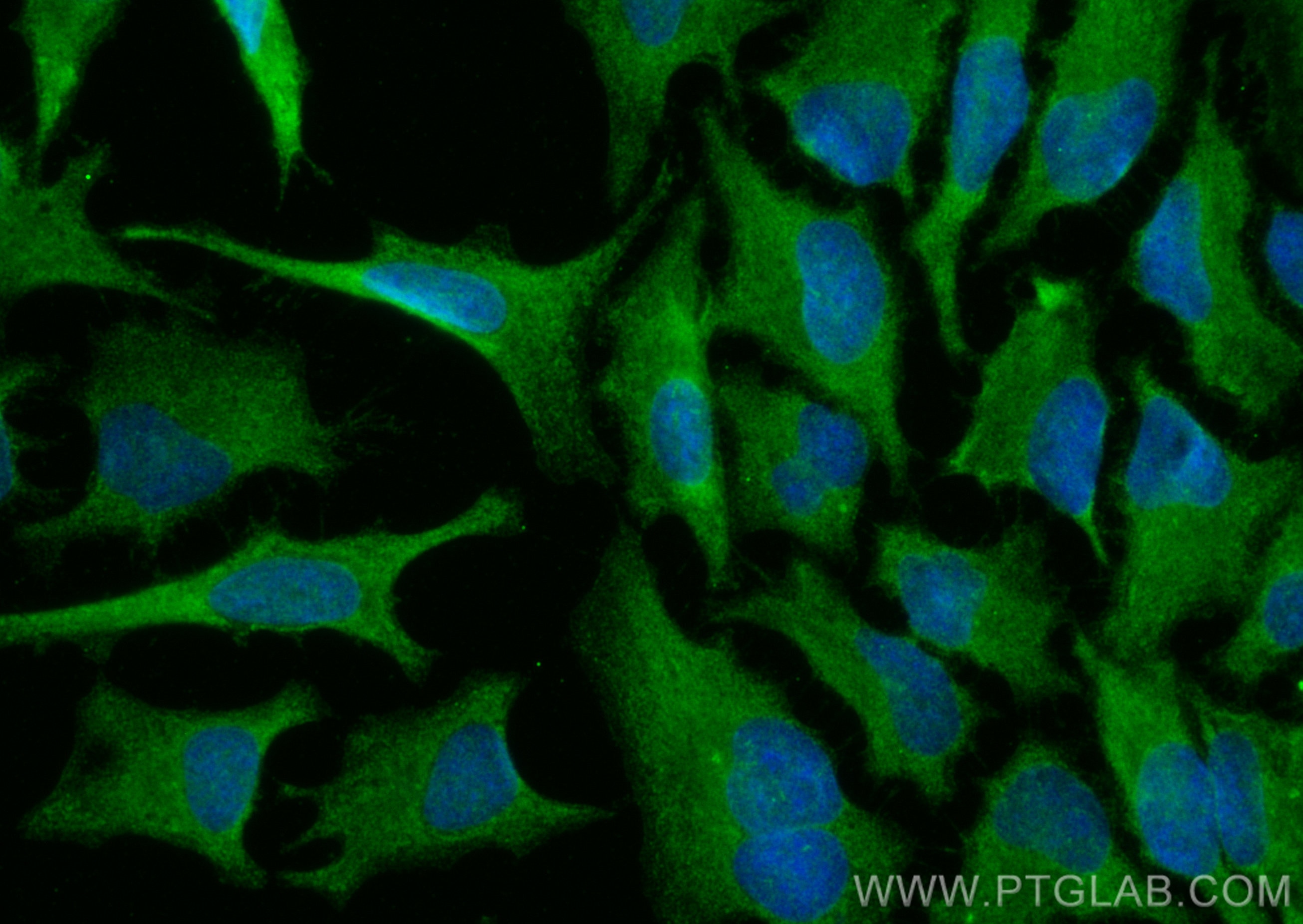- Phare
- Validé par KD/KO
Anticorps Polyclonal de lapin anti-LATS1
LATS1 Polyclonal Antibody for WB, IF, IHC, ELISA
Hôte / Isotype
Lapin / IgG
Réactivité testée
Humain, souris
Applications
WB, IHC, IF/ICC, ELISA
Conjugaison
Non conjugué
N° de cat : 17049-1-AP
Synonymes
Galerie de données de validation
Applications testées
| Résultats positifs en WB | cellules HepG2, cellules A549, cellules C2C12, cellules HT-29, cellules K-562, cellules SH-SY5Y |
| Résultats positifs en IHC | tissu de cancer du sein humain, tissu testiculaire humain il est suggéré de démasquer l'antigène avec un tampon de TE buffer pH 9.0; (*) À défaut, 'le démasquage de l'antigène peut être 'effectué avec un tampon citrate pH 6,0. |
| Résultats positifs en IF/ICC | cellules HeLa, |
Dilution recommandée
| Application | Dilution |
|---|---|
| Western Blot (WB) | WB : 1:500-1:2000 |
| Immunohistochimie (IHC) | IHC : 1:50-1:500 |
| Immunofluorescence (IF)/ICC | IF/ICC : 1:50-1:500 |
| It is recommended that this reagent should be titrated in each testing system to obtain optimal results. | |
| Sample-dependent, check data in validation data gallery | |
Applications publiées
| KD/KO | See 1 publications below |
| WB | See 37 publications below |
| IHC | See 8 publications below |
| IF | See 3 publications below |
Informations sur le produit
17049-1-AP cible LATS1 dans les applications de WB, IHC, IF/ICC, ELISA et montre une réactivité avec des échantillons Humain, souris
| Réactivité | Humain, souris |
| Réactivité citée | Humain, souris |
| Hôte / Isotype | Lapin / IgG |
| Clonalité | Polyclonal |
| Type | Anticorps |
| Immunogène | LATS1 Protéine recombinante Ag10709 |
| Nom complet | LATS, large tumor suppressor, homolog 1 (Drosophila) |
| Masse moléculaire calculée | 15 kDa, 127 kDa |
| Poids moléculaire observé | 140-150 kDa, 120 kDa |
| Numéro d’acquisition GenBank | BC015665 |
| Symbole du gène | LATS1 |
| Identification du gène (NCBI) | 9113 |
| Conjugaison | Non conjugué |
| Forme | Liquide |
| Méthode de purification | Purification par affinité contre l'antigène |
| Tampon de stockage | PBS avec azoture de sodium à 0,02 % et glycérol à 50 % pH 7,3 |
| Conditions de stockage | Stocker à -20°C. Stable pendant un an après l'expédition. L'aliquotage n'est pas nécessaire pour le stockage à -20oC Les 20ul contiennent 0,1% de BSA. |
Informations générales
LATS1(Large tumor suppressor homolog 1) is also named as WARTS and belongs to the AGC Ser/Thr protein kinase family. The gene encodes a highly conserved (from fly to human) protein kinase that plays a crucial role in the prevention of tumor formation by controlling the progression of mitosis. The expression of both long(170 kDa) and short lats1 isoforms(120 kDa) in vertebrate retinal cells raises the possibility that these lats1 proteins may act as negative key regulators of the cell cycle each of them performing a unique role (PMID:15777619). In mammalian cells, LATS1 was phosphorylated in a cell cycle-dependent manner and complexed with CDC2 in early mitosis (PMID:9988268). LATS1 also can be detected as 120 kDa and 140-150 kDa, and play a key role in the regulation of Hippo pathway (PMID: 27940445).
Protocole
| Product Specific Protocols | |
|---|---|
| WB protocol for LATS1 antibody 17049-1-AP | Download protocol |
| IHC protocol for LATS1 antibody 17049-1-AP | Download protocol |
| IF protocol for LATS1 antibody 17049-1-AP | Download protocol |
| Standard Protocols | |
|---|---|
| Click here to view our Standard Protocols |
Publications
| Species | Application | Title |
|---|---|---|
Cell Res A phosphatidic acid-binding lncRNA SNHG9 facilitates LATS1 liquid-liquid phase separation to promote oncogenic YAP signaling. | ||
Nat Commun Fusobacterium nucleatum reduces METTL3-mediated m6A modification and contributes to colorectal cancer metastasis. | ||
Theranostics CSRP2 suppresses colorectal cancer progression via p130Cas/Rac1 axis-meditated ERK, PAK, and HIPPO signaling pathways. | ||
JCI Insight KIBRA upregulation increases susceptibility to glomerular injury and correlates with kidney function decline | ||
Acta Pharmacol Sin KLF4 initiates sustained YAP activation to promote renal fibrosis in mice after ischemia-reperfusion kidney injury. |
